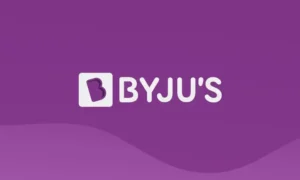The article is written by Victoria Lisitsyna, a UX/UI designer, art director, and mentor from Russia, exclusively for TechBullion
One of the most significant challenges in the development of any digital product is managing the continuous cycle of growth and evolution. As the user base expands, so too does the product team, with new managers, developers, and designers consistently adding features aimed at attracting more users and justifying their roles within the company.
Over time, this leads to the accumulation of multiple layers of new features, often overshadowing a foundation of older, overlooked functionalities. Interestingly, it is frequently these longstanding features that retain users’ engagement on a daily basis.
Strategic Focus: Prioritising Core User Tasks
To ensure sustained user engagement, it is crucial to identify the core tasks that users depend upon most frequently—typically fewer than ten, and often fewer than five. These tasks must be continually optimised to function flawlessly, as neglecting them could result in a decline in user retention.
Proposed Methodology:
- Compile a comprehensive list of user tasks within the product, incorporating insights from a wide range of team members.
- Refine this into a shortlist with input from key stakeholders.
- Facilitate a voting process among a representative sample of users to determine the most critical tasks.
- Rank these tasks in order of importance based on the voting outcomes.
Step 1: Compiling the Long List
At this initial stage, it is essential to set aside the company’s goals and instead focus on the users’ needs and tasks. Leverage as much data as possible from diverse sources:
- Organisational Strategy: Ensure alignment with the company’s strategy, mission, vision, and goals.
- User Feedback: Utilise survey results, frequently asked questions, and insights from support and sales teams.
- Interviews with Key Stakeholders: Engage stakeholders to identify what they perceive as the core user tasks.
- Competitor Analysis: Review competitor websites, social media, and media coverage to understand which tasks their users prioritise.
- Website Analytics: Examine the most visited pages, sections, and search history data.
The Limitations of Relying Solely on Analytics:
- Analytics reflect current functionalities, not necessarily what users desire. If a particular feature is absent, it will not be represented in the analytics.
- Analytics do not provide a comprehensive picture. For instance, users might bookmark critical sections and no longer search for them, or they may perform vital but infrequent tasks.
Be prepared to compile an extensive list of tasks, potentially running into hundreds. These must be meticulously refined to remove duplicates and internal jargon.
Example Task List for Cisco:
- Add a network diagram
- Annual reports
- Attendant console
- Benefits of product
- Network engineer blogs
- US forums and communities
- Bug toolkit
- Bugs, debugging
- Certifications
- Cisco MeetingPlace
- Collaboration
- Get pricing
- How to configure
- Discussion forums
- Technical forums
- Support community
- RV082 installation
- Network Magic
- Self-service
Step 2: Developing the Shortlist
The next step involves narrowing down the comprehensive list to a more manageable shortlist, ideally consisting of around 100 tasks. This process may be time-consuming, but it is crucial for gaining a thorough understanding of each task.
Recommendations:
- Avoid jargon and technical terms, as users are unlikely to use such language. Focus instead on user-friendly descriptions.
- Steer clear of overly broad tasks. Users visit your platform to accomplish specific actions, not to achieve abstract objectives like “spending quality time with family.”
- Keep task descriptions concise and focused.
Example Shortlist for Cisco (67 Tasks):
- Troubleshooting (bug fixes, diagnostics, guides)
- Blogs
- Calculate return on investment (ROI)
- Check product or service availability (lead times, back order, in stock, in my region)
- Compare Cisco products, services, and solutions to each other
- Customer/user reviews and ratings
- Download software, firmware, drivers, patches, updates
- Follow Cisco on Twitter, Facebook, YouTube
- Network design (tech guides, notes, examples)
- Pricing for an individual product or service
- Training (courses, calendar, locations)
- Troubleshooting (bug fixes, diagnostics, guides)
Step 3: Engaging Users Through Voting
A common approach involves distributing a survey to users, asking them to identify the top five most important tasks by assigning points: 5 points for the most important, 4 points for the second most important, and so forth.
Concerns that users might not complete a lengthy survey are often unfounded. Experience shows that users can efficiently navigate such surveys, quickly scanning and selecting the tasks that are most significant to them.
Step 4: Analysing the Results
After collecting user votes, the next step is to analyse the results. For example, Cisco began with approximately 600 tasks, which were refined to 67, and users were then asked to vote on these to determine their priorities.
- The top three tasks accounted for the first 25% of votes
- Six tasks constituted the 25–50% vote range.
- Fourteen tasks made up the 50–75% vote range
- Forty-four tasks filled the 75–100% vote range
Below is the ranking of the top 20 most popular tasks:
And here is the lower end of the list. The least popular task, “Financing, leasing options,” received only 29 votes compared to 2,408 for the most popular task:
Moving Forward
Involving a broad range of participants in this process ensures widespread awareness of the results within the team and fosters a sense of ownership, reducing potential resistance to the findings.
To maintain a strong focus on core tasks:
- Regular Evaluations: Designers, product managers, and UX researchers should periodically (approximately every six months) conduct UX testing of key scenarios, both independently and with actual users.
- Task Prioritisation Process: Implement a prioritisation process based on the findings. This approach ensures that even minor yet significant issues are promptly addressed.
A positive customer experience hinges on enabling users to accomplish their tasks efficiently and effectively. By managing core tasks, you can focus on what truly matters: minimising the distractions of numerous minor tasks and enhancing the few critical ones that your customers genuinely require.




































